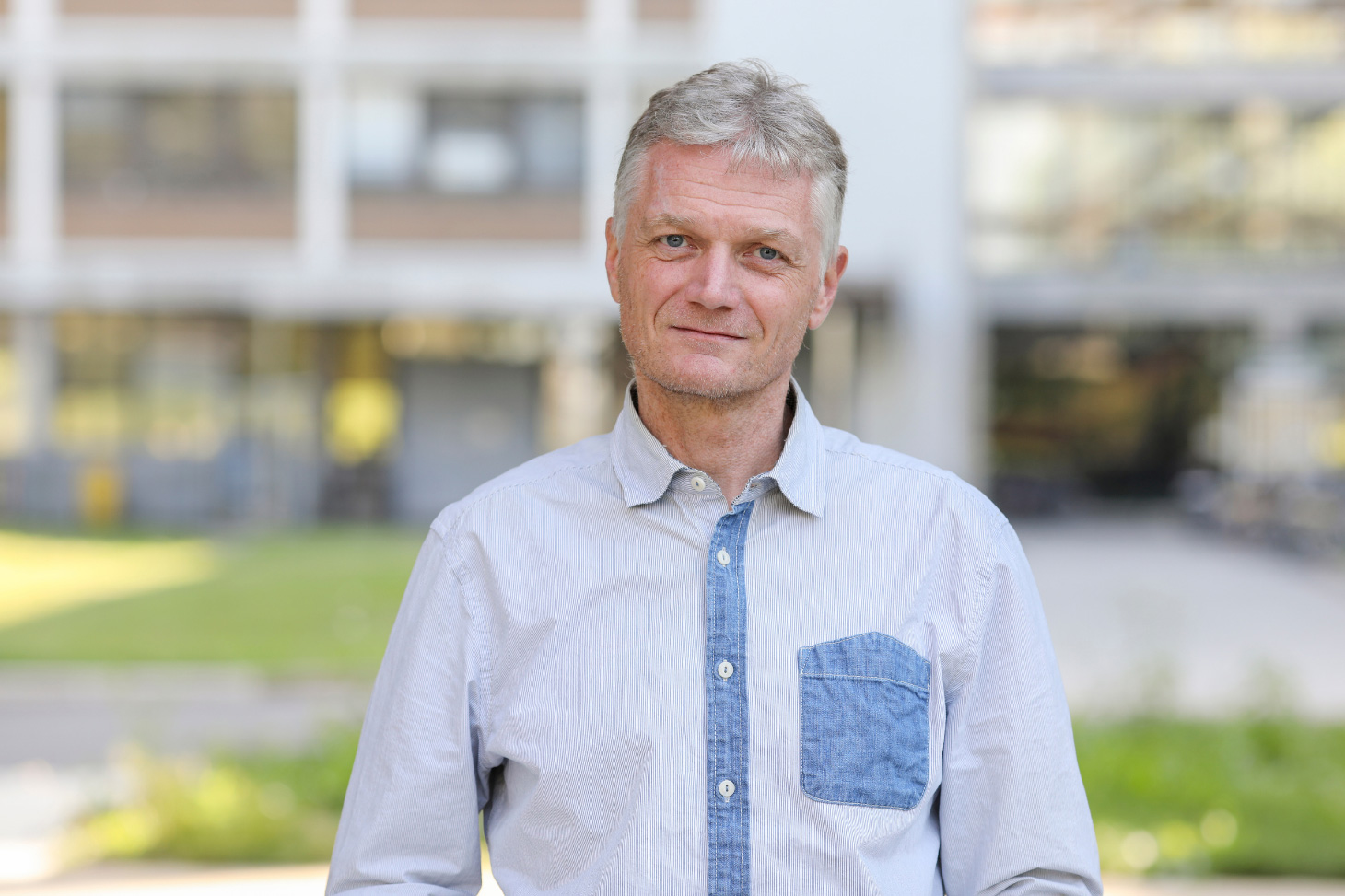Meeting with Gerhard Krinner, head of CNRS research team at Grenoble and one of the authors of the latest IPCC report
Research
On October 18, 2021

Gerhard Krinner is an expert in polar climate modelling and head of CNRS research at the Institute of Environmental Geosciences (IGE - CNRS / IRD / UGA – Grenoble INP-UGA) as part of the Climate-Cryosphere-Hydrosphere team. He is currently
working on methods to correct biases in climate projections and coordinated the “Global climate” section of the Technical Summary of the IPCC report published on August 9, 2021.
You contributed to the latest IPCC report. Can you first of all tell us in brief what the IPCC is?
The IPCC is the Intergovernmental Panel on Climate Change, a group of intergovernmental experts on climate change created in 1988 by the World Meteorological Organization (WMO) and the United Nations Environment Program (UNEP) to serve as a scientific basis for climate negotiations. The IPCC regularly assesses scientific research into climate change, which is used to help decision makers understand the consequences and risks, and come up with adaptation and mitigation strategies. Leaders of all the countries that have ratified the United Nations Framework Convention on Climate Change rely on the IPCC’s reports during Conferences of the Parties (COPs), held every year since the founding conference in Rio in 1992 following the publication of the first IPCC report in 1990.The report published on August 9, 2021 is the first part of the sixth IPCC report. How many parts are there to an IPCC report?
This is the sixth cycle of the IPCC report, following the last cycle in 2014. For each report, the IPCC puts together three working parties: working group I, for which I am one of 31 coordinating authors among the 234 international authors, which looks at the physical basis of climate change, working group II, which assesses the impacts and adaptation, and working group III, which works on measures to mitigate climate change. Each group writes a report of around 1,500 pages, and then a technical summary of around 100 pages, and finally a summary intended for political decision makers, which contains the essentials in around 15 pages. This summary is then discussed sentence by sentence during a meeting between the scientists and government representatives. For the report of group I, the meeting was held exceptionally by videoconference due to the COVID-19 pandemic, which considerably delayed publication of the report, initially scheduled for April 2021. The group II and III reports will be published in a few months’ time and followed by a summary report to be published in late 2022. This summary report, which is much shorter at around 60 pages, will compile the work of the three working groups and will also include a summary of around 15 pages intended for political decision makers.How was Grenoble involved in this report?
The three groups’ reports are divided into chapters. I was involved in writing Chapter 9 on ocean, cryosphere, and sea level change. I also coordinate the writing of the technical summary and I am one of a small group of authors (with 10 or so authors in each working group) who will write up the summary report at the end. My colleague Olga Zolina, lecturer at the IGE of Université Grenoble Alpes, contributed to Chapter 8 on water cycle changes. Lastly, Arona Diedhiou, Research Director at the Institute of Research for Development (IRD) at IGE, was also involved in the report as editor-revisor of Chapter 8. His role was to ensure that the authors responded to and took account of all comments (more than 78,000 for this report). He was also one of the authors of the special report “Global warming of 1.5 °C” published in 2018. It takes around three years to write an IPCC report.What are the climate projections that make up the IPCC’s reports?
A climate projection is based primarily on climate models. It’s a bit like weather forecast models, except these models simulate much longer periods. As we don’t know how greenhouse gas emissions will evolve, since they depend on our future political, individual decisions, etc., scientists are obliged to make hypotheses. We form several hypotheses, which we call scenarios. There are several types of scenarios: the extreme scenario, for which the Paris agreement is considered to be abandoned and therefore all the associated mitigation measures; the most realistic scenario, which consists of just implementing current government commitments to reduce greenhouse gas emissions; and the most virtuous scenario, which expects a complete reduction in greenhouse gas emissions and achieving carbon neutrality in 2050. From these scenarios, we deduce climate projections, with warming of 2.7°C or 3°C in 2100, for the scenario that more or less corresponds to governments' quantitative commitments, or around 1.5°C for the most virtuous scenario – considering that we have already seen an increase of 1.1°C since the preindustrial period. We can assess climate projections made in the past, for example those made by the IPCC in its first report in 1990: if we look at the scenario between 1990 and present day, which has given us the concentration of CO2 seen today (410 ppmv compared with a natural concentration of 280 ppmv), we can see that the projections made for this successfully predicted the sea level rise and the global increase in temperatures seen between 1990 and 2020.How should we interpret the fact that, more than 30 years after the first report, the IPCC is still relevant and is publishing a sixth report in 2022?
As regards what we know about climate change and climate projections, the IPCC’s message has essentially not changed for 30 years, but it is now much more detailed on a local level, and much more certain. With changes in calculation methods, we are now able to make much more precise climate projections with higher spatial resolution in our climate models. Furthermore, between the last report and this one, theoretical scientific progress has also reduced uncertainty about what we call climate sensitivity, or more simply how the climate will react according to the increase in CO2. There are still major uncertainties but it is clear, as we can already see, that extreme events – especially heatwaves and extreme rainfall – will increase everywhere. This time, the IPCC has also created an interactive atlas that allows you to see these climate projections on a local level. However, what has changed in the last 30 years is the fact that we are now certain that these changes are due to human activity. Essentially, it is clear that we have lost 30 years since the first report, as it would have been easier to start to reduce emissions early on. Now, if we want to limit global climate change to less than 2°C, this means reducing the current level of greenhouse gas emissions by 2% over the next 50 years, which is a very difficult target to reach. For example, the COVID-19 crisis in 2020 resulted in a 7% reduction in greenhouse gas emissions, and this wasn’t a happy time for anyone as everything came to an abrupt halt. Clearly, we will not be able to halt climate change by means of a generalized shutdown like that, which gives us an idea of the challenge we face.What is the next step after the 2022 summary report?
There will be a seventh IPCC assessment cycle, but the form of this is still to be defined. A lot of people are saying that the current model with these big assessment reports has been around for a long time and in particular that it requires too high a level of availability from researchers. But it isn’t clear how this model, defined by the UN, can be reformed, and it’s possible that the seventh report will therefore be in the same form as the sixth, but I do not intend to participate in it. I’ve done it twice – the first time in 2013 for the first part of the fifth report, when I had a much less exposed role as I was only the author of a chapter on long-term climate projections. At the time, this took up 20% of my time for a few years, but this time it was much more, sometimes 100% of my time. Most authors of the first group’s report have finished, but I will still be very busy for another year.
Published on November 25, 2021
Updated on November 25, 2021
Updated on November 25, 2021

